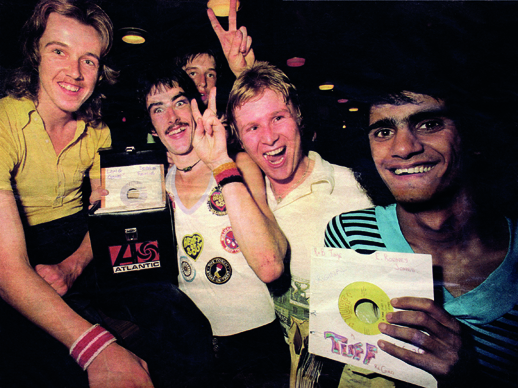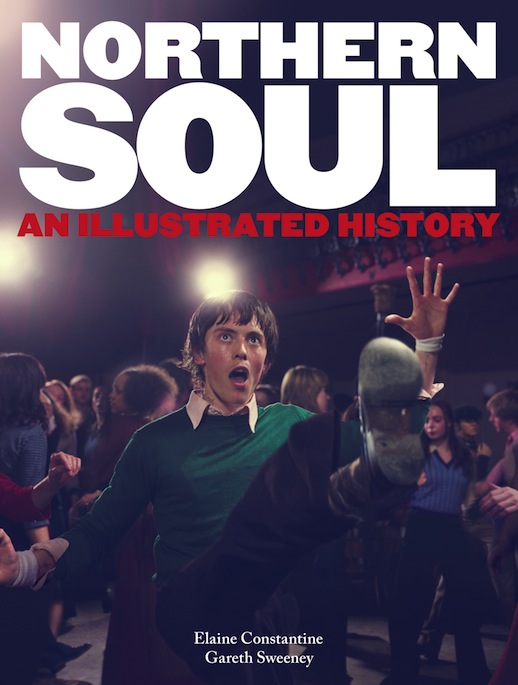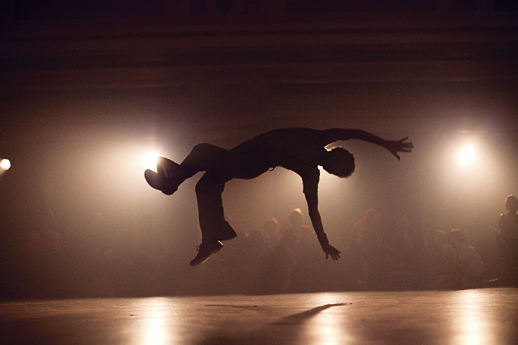Northern Soul: An Illustrated History by Elaine Constantine and Gareth Sweeney.
Review by Bill Brewster.
Northern soul is the scene that refuses to die. Born in the mod clubs in the 1960s and finessed at the Twisted Wheel in Manchester, Stoke’s the Torch, The Blackpool Mecca and Wigan Casino, it’s arguably the purest musical scene we’ve ever had in Britain. There are no superstar DJs, no branded nights, only furiously committed aficionados for whom soul music is a guide to a way of living rather than a genre of music.
The northern soul DJ is much more likely to be travelling in an old banger on A roads to Skegness than jetting to play Ibiza or the Italian Riviera – having spent what little money they earned for spinning on yet another rare soul 45. If there is glamour in northern soul, it’s well hidden. They are the musical purists’ purists.
 Wigan Casino, late-1970s courtesy of Sharon Wolstencroft
Wigan Casino, late-1970s courtesy of Sharon Wolstencroft
My first brush with the strange world of northern soul came in 1976 when a friend, Ross, cajoled me into travelling down to London from Cleethorpes to buy a pair of leather-soled shoes. So the two of us spent seven hours travelling to and fro, purely for a visit to Ravels in Oxford Street. Leather soles plus talcum powder equals dance heaven. Ross dressed differently and lived for soul music (when Dexy’s Midnight Runners arrived a few years later, it was obvious where their style tips had come from). Inevitably, my curiosity got the better of me and I attended my first all-nighter, at the Cleethorpes Winter Gardens, sometime shortly after. I was both impressed and completely out of my depth. I thought I knew a bit about music. That night, I realised I knew nothing. The dancing was so good; all you could do was stand on the steps from the bar to the main floor and watch. Anyone attempting to join the fray without well-worked moves and some serious practice risked humiliation. I stayed on the steps. I could easily have been sucked up until it all, but instead I heard the Sex Pistols, moved to London and became a northern dilettante, occasionally venturing out to the 100 Club, or having my enthusiasm re-ignited by discovering a particularly great 45 (Jackie Wilson’s ‘Blue Skies’ and Patti Austin’s ‘Take Away The Pain Stain’ spring to mind).
In the meantime, the rest of the north got on with it. Cleethorpes came and went and some of my mates got married and stored the box of battered 45s in the loft, while the rest bought scooters and rode with the Stateside Scooter Club.
Elaine Constantine is one of the faithful. I first met her nearly 20 years ago when we were both freelancing for The Face, and she had the look of the committed soulie back then and little has changed in the interim. The movie from which this book has sprung, has sucked up all her free time and money for the past several years, as she has coached young dancers into the ways of northern soul – as much Bruce Lee as it is Curtis Lee. Essential to the success of her film was a cadre of committed kids who were young enough to pass as the real soul dancers of the early 1970s and its testament to her commitment that she’s been coaching them for the past several years in preparation for the movie. Much of it has been completed, but in the meantime, there’s the book, Northern Soul: An Illustrated History, written and compiled by Elaine with Gareth Sweeney.
Northern soul has been particularly badly served by its literature. There have been many more literary ‘Footsee’s than ‘Sliced Tomatoes’. The only really outstanding book has been Mike Ritson and Stuart Russell’s The In Crowd, the rest a mixture of cobbled-together cash-ins and poorly executed memoir. Northern Soul: An Illustrated History, relies heavily on fan photos, interspersed with shots from Constantine’s movie and it’s a tribute to her that the joins are seamless, the only way to tell them apart is the quality of the print. The text largely relies on oral history and, although the story starts in the early ’60s, it really comes alive once the scene starts to coalesce around the turn of the 1970s. The star interviewees are Dave Clegg, whose vivid recollections light up the narrative, and the charismatic Chris Brick who, I must confess, I’d only ever known as the man behind Demob and the eccentrically brilliant Family Of God album he made when we were both living in New York. This book is worth buying for Chris Brick’s capers alone. (The campaign for his autobiography starts here.)
If there’s a fault, it’s that the book is lacking in a wider scope of interviewee, another 10 or 20 would have greatly widened out its perspective and some more of the early stalwarts (Rob Bellars, Farmer Carl Dene etc.) would have enlivened the early chapters. It’s a small caveat though. Next up: Northern Soul: The Soundtrack?
Bill Brewster is a co-founder of the website and book publisher, DJ History.

